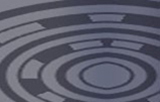The Don and Helen New Zealand election 2005: A media a-gender?
Abstract
The media uses the technique of framing to process and package information in order to make sense of the material and present a news ‘story’ which is accessible to the audience. International research reports demonstrate a consistent ‘gendered’ framing of media coverage. ‘Gendering’ refers to the highlighting of a person’s gender, when this is not particularly relevant to the context. Usually gendering involves seeing the male as the norm, and the female as the remarkable. In terms of the media and politics, this gendering includes the under-representation of women politicians, an emphasis on their appearance, marital and maternal status, and personality rather than the policies and issues of debate. More recently, however, there is evidence that in some contexts the media is becoming less overtly biased in its representation of women politicians. While there are still many ways in which women are presented differently from their male counterparts, there is also some evidence that an emphasis on gender is initiated by the party campaigns rather than being a result of media agenda-setting.
Downloads
Metrics

Copyright (c) 2006 Pacific Journalism Review

This work is licensed under a Creative Commons Attribution-NonCommercial 4.0 International License.















